This post contains affiliate links (I get a commission at no extra cost to you for purchases made through links in this post).
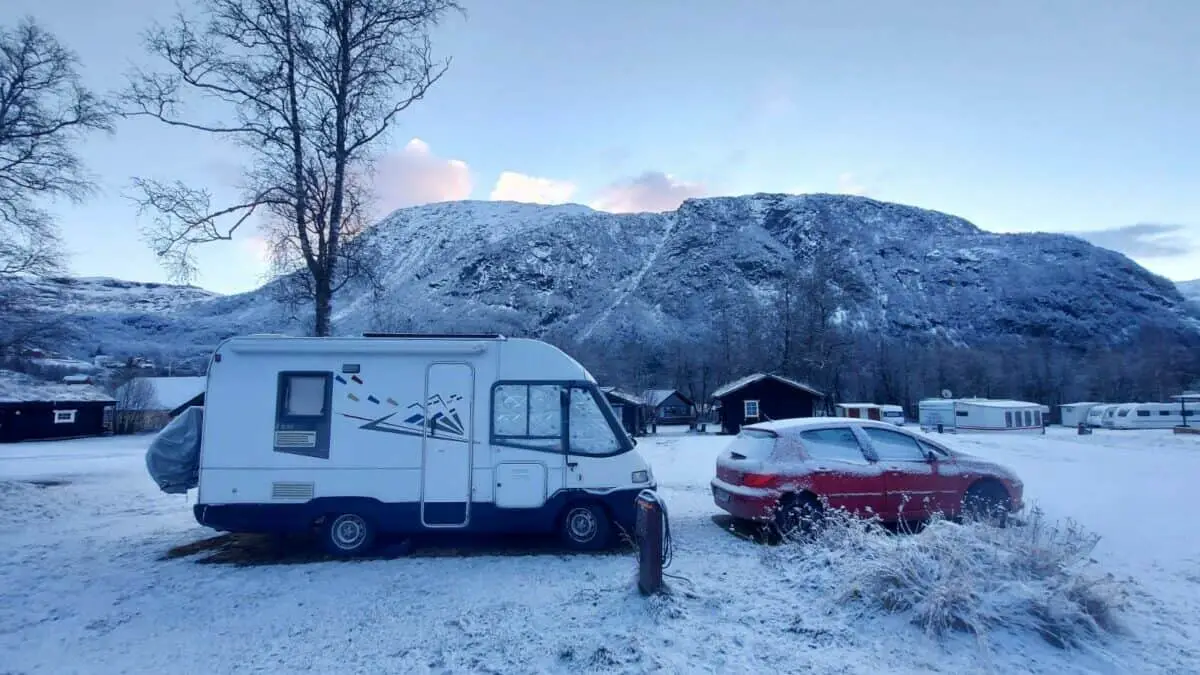
Is it time to go winter camping, and are you expecting some icy temperatures? Don’t worry; I will go through how I kept my grey tank from freezing for a whole winter in Norway.
To keep a non-insulated grey tank in a motorhome, RV, or caravan from freezing in really frigid climates. First, disconnect the grey water sewage pipes underneath the RV to create free-falling sewage, then place a bucket at the outlet to act as a grey tank.
When you have a non-insulated grey water tank underneath your motorhome, the pipes from your sinks and drains usually go the fastest way, vertically to the underside of your motorhome. There they are exposed to the icy cold weather and lined horizontally, and the water flows slowly to the grey water tank giving it the possibility to freeze quickly.
If it is really nippy outside, the water might not even make it to the grey water tank but freeze in the pipe.
This setup worked for me for a whole winter in Norway at -20 C (-4 F)
-the motorhome king
Disconnect The Grey Water Pipes Underneath Your Motorhome
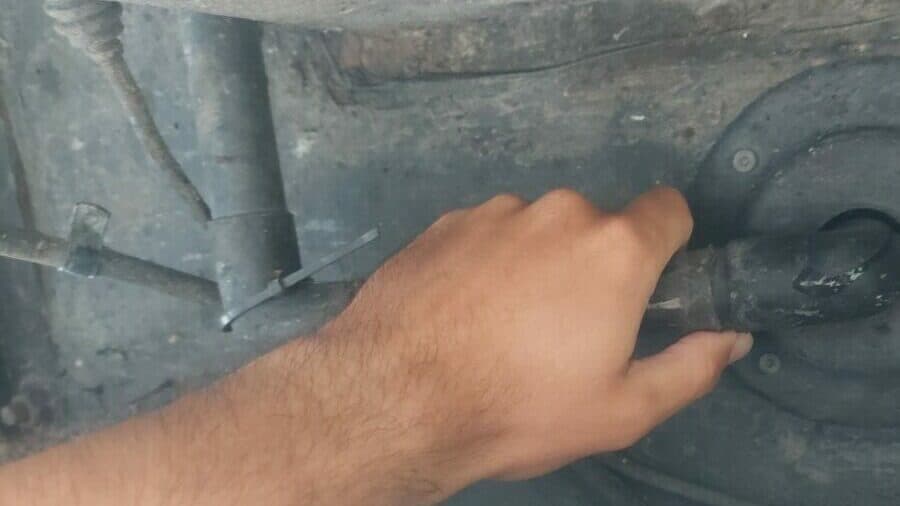
To avoid any grey water ever reaching the grey water tank or freezing in the pipes underneath your motorhome, RV, or caravan in the icy cold winters, disconnect the grey water pipes as soon as they come outside the insulated flooring underneath your motorhome. This way, the water will free-fall straight out from the vertically placed pipes, never leaving enough time to freeze in the last part of the pipe sticking out.
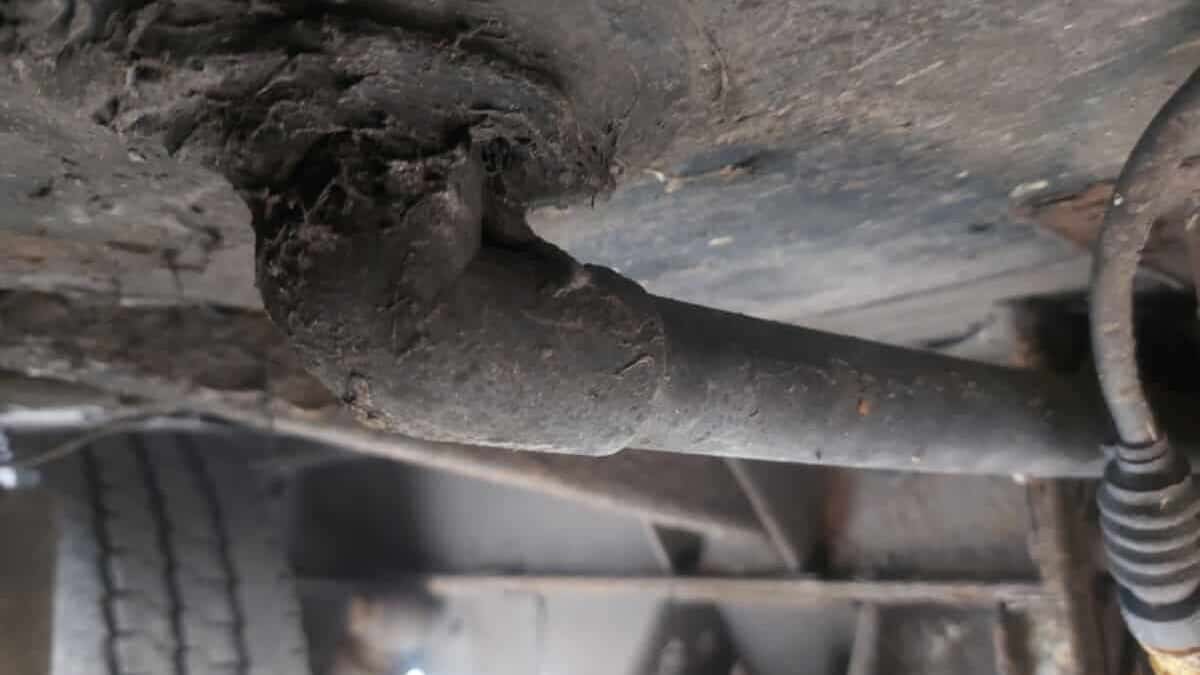
I have three grey water pipes underneath my motorhome, one from every sink or drain; the kitchen sink, bathroom sink, and shower drain are all coming out underneath the motorhome in various locations, so I needed to disconnect three different pipes.
Where Will The Grey Water Go Now?
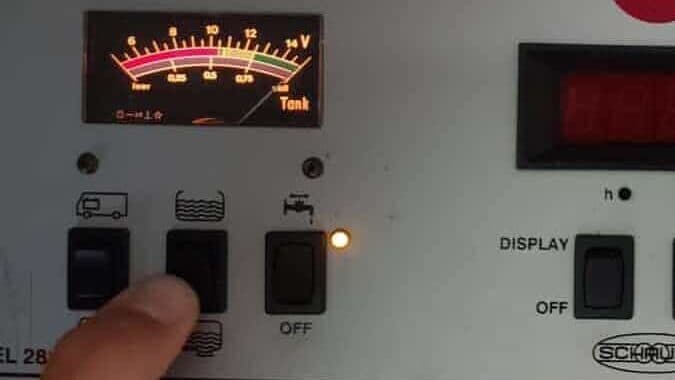
Now your grey water tank is disconnected, and the grey water will free fall directly to the ground underneath your motorhome, RV, or caravan. To do this correctly, keep a bucket or durable plastic container with a wide opening underneath all the disconnected pipes where the grey water will flow to catch the grey water and let those act as your new grey water tank.
Now you can empty those grey water collectors every time you use a large amount of water or when they are full; If you wait until they are full, the grey water inside will probably have frozen. So instead of having frozen pipes and a grey water tank that prevents you from using your water system, you now have a bucket of frozen grey water that you can remove and dump at a heated grey water station where it melts and drains down the same place as it would in the summer.
Please choose a suitable plastic container to quickly and easily get the ice out when it is time to dump it; that is why high-quality buckets are typical because of the big opening and durable plastic that doesn’t break from the ice. Also, remember to look for a low bucket or container since you don’t have too much space for a big bucket under the motorhome.
Heated dumping stations are not that common, but in popular winter campsites, they can exist for this reason.
What I did living full-time in the winter was instead doing it the “wrong” way; after agreeing with the owner of the campsite and only using biodegradable products, I skipped the collectors underneath and let the water go straight out. Again, using biodegradable products and wiping the dishes before doing them, and with the landowner’s agreement. However, it is not the right way of doing things, and depending on regulations, you could be in trouble.
Depending on regulations, you could be in trouble.
Other Ways of Keeping The Grey Water Tank From Freezing
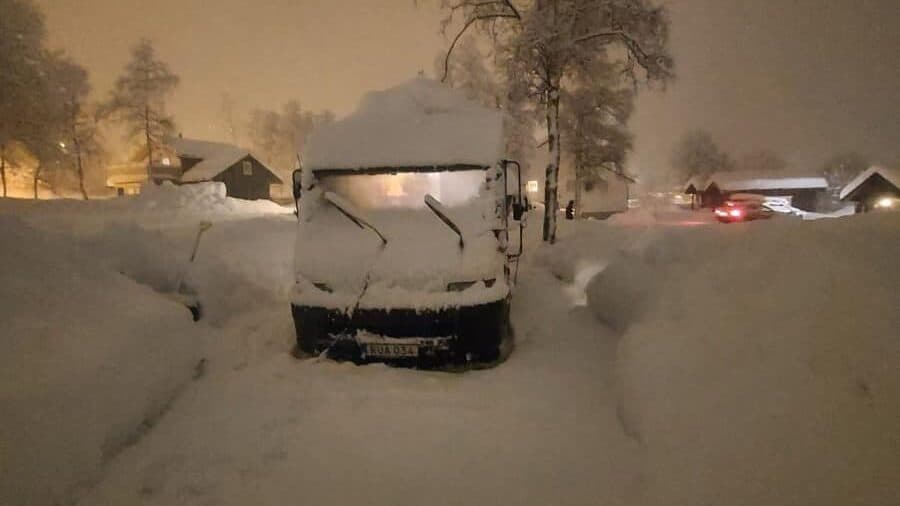
There are other options than the one I mentioned above, where you disconnect the grey water tank and the pipes underneath the motorhome and never expose the grey water to the icy temperatures. Those other options will require more resources but can be better for some, especially those who don’t have cold winters.
- Install a skirt to your motorhome, RV, or caravan and place a heater underneath the motorhome.
I have never used this option, but it is a common sight with skirts on more stationary motorhomes; it is a piece of fabric hanging from the sides of the motorhome to the ground to prevent cold air from circulating underneath and help as isolation.
The skirt alone won’t help a non-insulated grey tank or pipes from freezing in the winter, but it could help prevent drafts and help keep the floor inside a bit warmer, and lower the heating costs. As I said, I have not tried this, but I wanted one on windy winter days, mainly to prevent drafts.
By placing a stand-alone heater underneath the RV near the grey water tank and using this skirt, you will probably be able to keep it warm enough to keep your grey tank and the pipes unfrozen and a warm floor inside. Of course, this will cost you a lot of electricity or propane to run an extra heater non-stop in a poorly insulated area, and I wouldn’t recommend it, but I have heard people doing it. - Using antifreeze.
One of the most common options is to use nontoxic RV antifreeze to prevent the water tank from freezing; again, I have not tried this simply because I would need a lot of antifreeze for an entire winter at -20 C (-4 F) for it to be reasonable. However, I can see that this option would make a lot of sense if you only have a few nights just below freezing and dont want to hassle with other options. In addition, it is simple and quick to pour some antifreeze down the sink and be done with it. - Installing aftermarket heating systems.
There are electrical heating systems that you can install directly onto the grey water tank; those that I have seen stick onto the tank and run on 12 volts. It is like a thinner film that automatically starts and stops depending on the temperature. This, combined with some extra insulation around the tank, could be a good option if you have an electrical hookup and manage to get the horizontal pipes underneath the motorhome not to freeze.
That heating system is for the tank, but there are also similar heaters for the drain; those are more like a heated pipe that you put into the drain pipe, or you could use heating cables inside the pipes.
Again this is not a solution that I have tried, so I can’t recommend buying all those things, especially if you are in a place where you can get some real cold. I have doubts they would work on their own if it gets freezing unless you combine it with proper DIY insulation of the whole tank and all pipes. This might support the heaters enough to make it work.
The grey water tank is not the only thing that is at risk of freezing
The water pipes inside your motorhome, RV, or caravan could also be at risk of freezing under some conditions. I had problems with part of the fresh water pipe freezing in Norway, the one going to the kitchen sink and the shower. If you are interested in knowing if the fresh water pipe can freeze in one night, check out my other article where I cover that topic.
